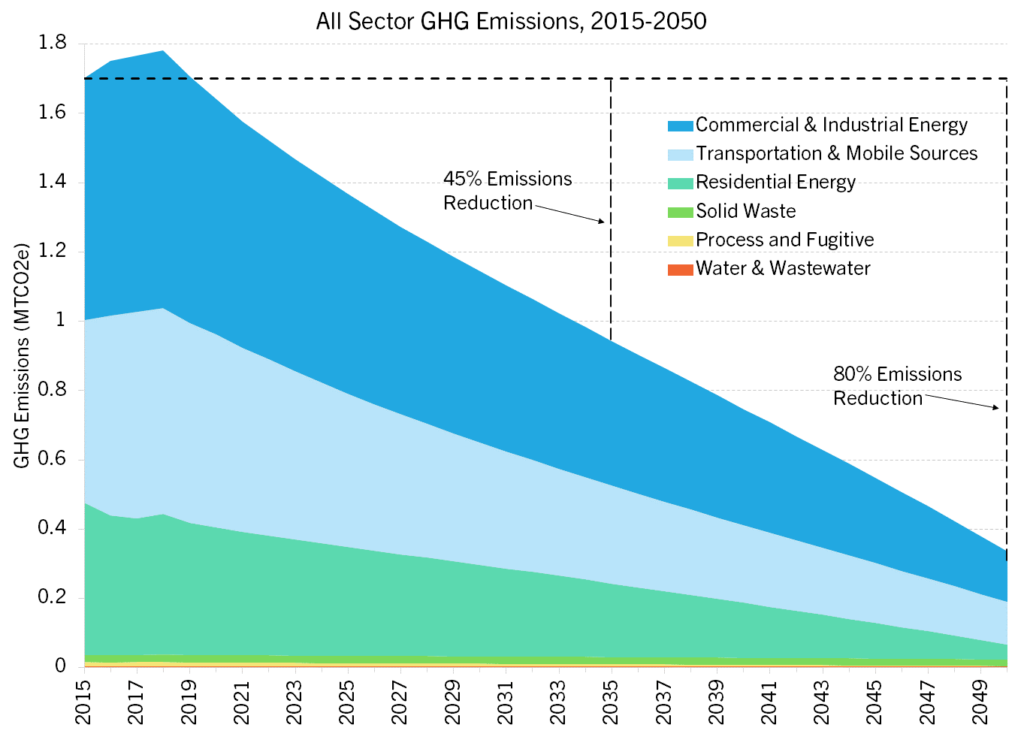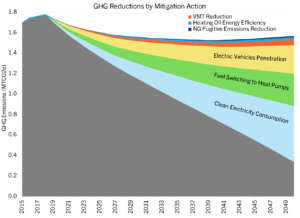Climate Justice for Providence
Providence Mayor Jorge Elorza had powerful words about the role equity must play in climate work when the city released its Climate Justice Plan in late October.
“Despite being one of the three pillars of sustainability, equity is often an afterthought when it comes to climate action planning,” Elorza wrote in the plan’s introduction. “In creating this plan, we chose to lead with equity and partnered with those who are most impacted by the climate crisis and other environmental injustices.”
Acadia Center is proud to have supported Providence and its Racial and Environmental Justice Committee (REJC) in developing a plan that charts an equitable, low-carbon, climate-resilient future for residents.
Overall, the Climate Justice Plan is built around carbon-reduction targets in two key sectors – buildings and transportation – and a complete transition to carbon-free electricity sources like solar and wind. Acadia Center developed those targets in a two-step process. First, analysts in our CLEAN Center projected the city’s emissions out to 2050 assuming no new climate action and taking into account existing technologies and trends. Next, Acadia Center built another scenario to put Providence on track for at least an 80% greenhouse gas emissions reduction — and carbon neutrality — by 2050. Figure 1 below shows the emissions reduction trajectory by sector.

In addition to recommending targets, Acadia Center supported the REJC’s development of approaches to achieve deep reductions in carbon emissions and local air pollution to improve community health. The policies listed below are among those that will help Providence reach the necessary emission reductions.
Buildings:
| 2050 Target | 2035 Interim Target | Policy Examples |
|---|---|---|
| 90% of residential heating and 85% of commercial heating converted to high-efficiency electric heat pumps | 48% residential and 45% commercial heating converted to heat pumps | • Increasing energy efficiency program participation and total energy savings for low-income residents • Passing a Building Energy Reporting Ordinance requiring large building owners to report energy use and emissions to the city • Launching a formal stakeholder process to explore mandatory emissions reductions for large buildings |
Transportation:
| 2050 Target | 2035 Interim Target | Policy Examples |
|---|---|---|
| 20% reduction in Vehicle Miles Traveled in Providence; 80% of VMTs in Providence electrified | 11% reduction in VMTs in Providence; 43% of VMTs electrified | • Investing in cleaner, more accessible public transit through electrification of RIPTA, prioritizing routes in communities of color • Converting 100% of the city’s vehicle and school bus fleets to renewable vehicles |
Clean Energy:
| 2050 Target | 2035 Interim Target | Policy Examples |
|---|---|---|
| 100% of electricity is carbon-free | 50% of electricity is carbon-free | • Implementing a community choice aggregation program that prioritizes local renewable energy sources and includes principles of energy democracy • Increasing access to renewable energy for frontline communities via community solar • Exploring the use of municipal buildings to support a community solar project for low-income residents and renters |
Figure 2 below shows that the three sectors contributing the most to the city’s overall GHG emissions reductions in 2050 are clean electricity (44%), fuel switching to heat pumps (25%), and penetration of electric vehicles (22%). Eliminating energy waste through energy efficiency and reducing reliance on vehicles are also contributors.

Much hard work remains to put the plan into action. In addition to carbon reduction strategies, it calls for systems-level changes in the city’s governance structure and economic system and assurance that frontline communities will not be displaced as Providence becomes climate-ready.
Pol Tavarez, a member of the REJC, told The Providence Journal, “I have faith that this report is really the first step in community members coming together to recognize their influence and their power to reach these objectives.”
Visit Providence’s Climate Justice Plan home page for more resources including a Spanish translation and audio “future stories.” Complete information on Acadia Center’s modeling approach is found in the Technical Appendix.
by Erika Niedowski



















Follow us